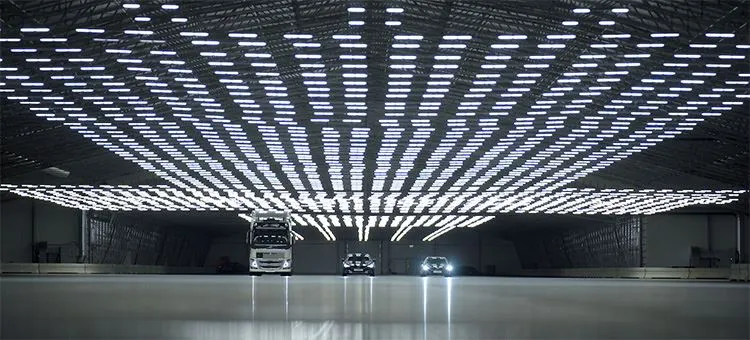Researchers at the Volvo Group are looking into a future where trucks and buses are continuously supplied with electric power without carrying large batteries. Instead, power lines are built into the surface of the road. This could be a future solution for long-distance trucks and buses running on electricity. “In city traffic, there are currently various solutions and we are researching many others. We have field tests in progress where our plug-in buses are equipped with a battery that can be charged quic
July 1, 2013
Read time: 3 mins
Researchers at the 609 Volvo Group are looking into a future where trucks and buses are continuously supplied with electric power without carrying large batteries. Instead, power lines are built into the surface of the road. This could be a future solution for long-distance trucks and buses running on electricity.
“In city traffic, there are currently various solutions and we are researching many others. We have field tests in progress where our plug-in buses are equipped with a battery that can be charged quickly when the buses are at bus stops,” says Mats Alaküla, the Volvo Group’s expert on electric vehicles and Professor at Lund University.
However, this will not work for long-distance trucks and buses, which stop infrequently and would need so many batteries that there would be no room for cargo or passengers.
The method currently being developed and tested by the Volvo Group and Alstom entails two power lines built into the surface of the road along its entire length. A current collector in contact with the power lines will be located on the truck.
“With this method, electric vehicles could be continuously supplied with power without carrying large batteries,” says Mats Alaküla. “The power line will be built in sections and one section is only live as the truck passes.”
Volvo has been testing the system since last autumn on a 400-meter long track at its test facility in Hällered outside Gothenburg.
“We are currently testing how to connect the electricity from the road to the truck. The electricity flows into a water-cooled heating element, with similar power requirement as an electricity-driven truck,” says Richard Sebestyen, project manager at Volvo Group Trucks Technology, the Volvo Group’s research and development division.
A lot more research is required before the electric road becomes a reality, involving development of the current collector, electric motor and control systems, as well as toad construction and maintenance.
“A lot of years remain before this is on our roads,” says Mats Alaküla. “But if we are to succeed in creating sustainable transport systems, we must invest significantly in research now. I am convinced that we will find a cost-efficient way to supply electricity to vehicles in long-distance traffic and we have already come a long way in our research.”
“In city traffic, there are currently various solutions and we are researching many others. We have field tests in progress where our plug-in buses are equipped with a battery that can be charged quickly when the buses are at bus stops,” says Mats Alaküla, the Volvo Group’s expert on electric vehicles and Professor at Lund University.
However, this will not work for long-distance trucks and buses, which stop infrequently and would need so many batteries that there would be no room for cargo or passengers.
The method currently being developed and tested by the Volvo Group and Alstom entails two power lines built into the surface of the road along its entire length. A current collector in contact with the power lines will be located on the truck.
“With this method, electric vehicles could be continuously supplied with power without carrying large batteries,” says Mats Alaküla. “The power line will be built in sections and one section is only live as the truck passes.”
Volvo has been testing the system since last autumn on a 400-meter long track at its test facility in Hällered outside Gothenburg.
“We are currently testing how to connect the electricity from the road to the truck. The electricity flows into a water-cooled heating element, with similar power requirement as an electricity-driven truck,” says Richard Sebestyen, project manager at Volvo Group Trucks Technology, the Volvo Group’s research and development division.
A lot more research is required before the electric road becomes a reality, involving development of the current collector, electric motor and control systems, as well as toad construction and maintenance.
“A lot of years remain before this is on our roads,” says Mats Alaküla. “But if we are to succeed in creating sustainable transport systems, we must invest significantly in research now. I am convinced that we will find a cost-efficient way to supply electricity to vehicles in long-distance traffic and we have already come a long way in our research.”










